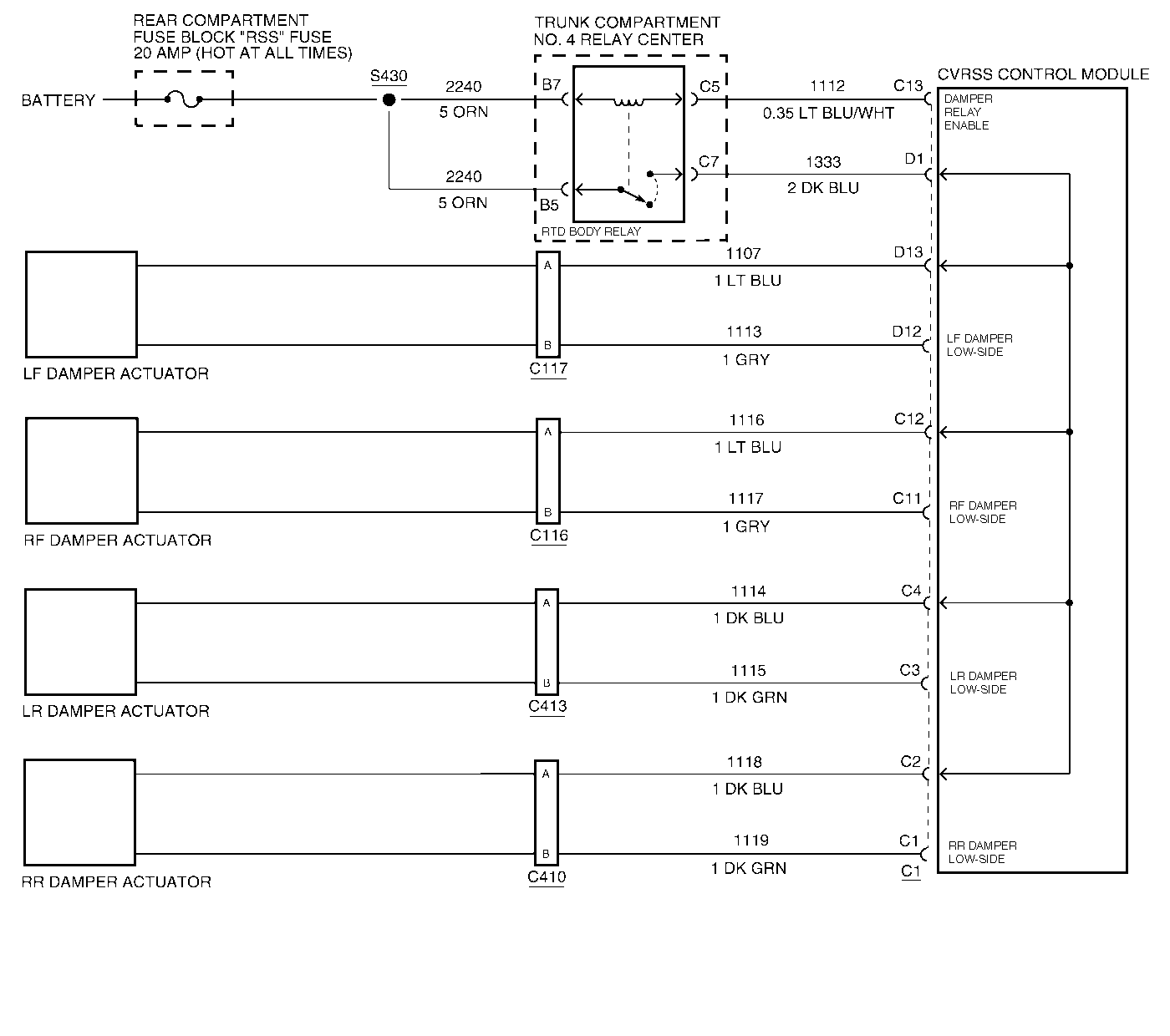
Circuit Description
The high-side (battery) voltage for the CVRSS damper actuators is supplied to the CVRSS control module through the CVRSS Damper Control Relay (RTD Body) circuit. The Damper Control Relay circuit is controlled by the CVRSS module. The CVRSS control module monitors the relay drive circuit and each damper actuator high-side and low-side drive circuits for fault conditions.
DTC C1786 is used to detect a fault condition with the damper control relay contacts and associated wiring.
Conditions for Setting the DTC
The DTC is set when there is a loss of battery voltage on pin D1 of the CVRSS control module.
The DTC turns HISTORY when the CVRSS control module senses a battery voltage at pin D1 after the ignition has been cycled.
Action Taken When the DTC Sets
| • | ALL the damper actuators will be disabled by commanding 0 % PWM duty cycle. The vehicle ride will be soft. |
| • | The vehicle speed will be limited. |
| • | The SERVICE RIDE CONTROL message will be displayed. |
Conditions for Clearing the MIL/DTC
| • | Use the scan tool. |
| • | Use the On-Board diagnostic CLEAR RSS CODES feature. |
Test Description
Important:
• Do not backprobe the sensors, actuators, or any sealed connectors. • When all the diagnostics and repairs are complete, clear the DTCs
and verify the operation.
The number(s) below refer to the step number(s) on the diagnostic table.
-
This step checks the contacts of the relay for proper operation.
-
This step checks CKT 2240 for an open circuit condition.
-
This step checks CKT 1333 for an open circuit condition.
Step | Action | Value(s) | Yes | No |
|---|---|---|---|---|
1 | Was the CVRSS System Check performed? | -- | Go to Step 2 | |
2 | Is DTC C1787 or C1788 set? | -- | Go to Step 3 | |
Is the measurement greater than the specified value? | 10 V | Go to Step 6 | Go to Step 4 | |
Is the measurement greater than the specified value? |
10 V | Go to Step 5 | Go to Step 7 | |
Is there continuity? | -- | Go to Step 9 | Go to Step 8 | |
6 |
Is the voltage measured more than 0.5 volt higher than the voltage measured in Step 3? | -- | Go to Step 9 | Go to Step 10 |
7 |
Is the repair or replacement complete? | -- | -- | |
8 |
Is the repair complete? | -- | -- | |
9 |
Is the repair complete? | -- | -- | |
10 |
Important: The controller must be calibrated. Is the CVRSS control module calibrated? | -- | -- |
